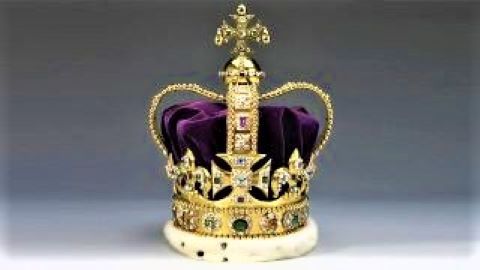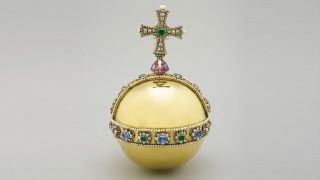The weighty aspects of the Coronation of King Charles III
King Charles III will be crowned at Westminster Abbey, in London, England, in a couple of days. Whilst he became King at the moment of the death of his Mother, Queen Elizabeth II, on 7th of September 2022, the coronation ceremony is being held quite some months later. It takes much planning and practice to ensure the flawless execution of the pomp and pageantry that we have come to expect from British Royal events – be it weddings, funerals or coronations!
Whether you are interested in the British Royals or not, this is a historical occasion because it is not seen very often – the last was 70 years ago on 2nd of June 1953, when Queen Elizabeth was crowned following the death of her father, King George VI. Charles was just 4 years old at the time, and was present at the ceremony. Now aged 73, he has had to wait a long time for his time to shine, hasn’t he!




Charles will be the 40th monarch to be crowned since William the Conqueror in 1066. The event, beginning at 11am UK time, will be televised around the world, and millions of people will probably tune in. Here in Australia, that will be at 8pm and will last about 3 hours, even though Charles has requested a “pared down” ceremony, compared to the Queen’s! If you would like to read in detail about the order of proceedings, click here.
Another reason that this will be a historical event is that never in most of our lifetimes have we seen both a King and a Queen crowned in Britain!
We thought it would be interesting to focus on a couple of aspects of the coronation before the event. Firstly, we will take a look at the Crown Jewels that will be used in the ceremony, and tomorrow, the two coaches that will transport the new King and his Queen, Camilla, each way.
The Crown Jewels generally reside at the Tower of London, and some date back to the 1600s, with gemstones dating as early as 1415. They are kept by the monarch on behalf of the people, and are usually on display. Have you been to the Tower of London to see them? I was lucky enough to go there about 20 years ago.
The items used in the Coronation ceremony are called The Coronation Regalia. The collection includes St Edward's Crown, the Imperial State Crown, the Sovereign’s Sceptre with Cross and the Sovereign’s Orb. We will examine each one.



Firstly, the St. Edward’s Crown is used at the actual moment of coronation, placed on the head of the monarch by the Archbishop of Canterbury during the ceremony. The current St Edward's Crown was made for Charles II in 1661, after Oliver Cromwell melted down the previous Crown Jewels during the Interregnum of 1649-1660! It is solid gold, 30 centimetres (12 in) tall, weighs 2.23 kilograms (4.9 lb), and is decorated with 444 precious and semi-precious stones. But whilst it is 350 years old, it has only been used to crown six monarchs. I imagine it has been eschewed by others mainly due to it’s weight. For example, it didn’t feature in the crowning of Queen Victoria at all.
King Charles has recalled that his mother had to practice wearing the crown before the coronation, to get used to the weight. He remembers the time when she walked in at bath time, wearing it! I wonder if Charles has also been walking around the Palace at times to get used to it as well!
Can you imagine wearing 2.23kg on your head, even for a short time? You might like to try it with a large packet of flour or sugar!

The Imperial State Crown is the crown that the monarch wears on leaving Westminster Abbey after the coronation. It is also used on other State occasions such as the opening of Parliament each year. It is 31.5 cm (12.4 in) tall and weighs 1.06 kg (2.3 lb). It has four fleurs-de-lis alternating with four crosses pattée, supporting two arches topped by a monde and cross pattée. Its purple velvet cap is trimmed with ermine.1 Even at half the weight of the St. Edwards crown, it is still quite heavy to wear for any length of time!
The late Queen Elizabeth II verified this when she said in TV documentary in 2018: ”You have to keep your head still [when wearing it.] And you can't look down to read the speech -- you have to take the speech up. Because if you did, your neck would break, or it would fall off. So there are some disadvantages to crowns, but otherwise they're quite important things.”
The crown, made for the coronation of King George VI in 1937, is set with 2,868 diamonds including 17 sapphires, 11 emeralds and hundreds of pearls, including four known as Queen Elizabeth I earrings. It also features the Black Prince's Ruby, believed to have been worn by King Henry V in his helmet at the Battle of Agincourt in 1415. 1


Camilla, currently titled Queen Consort, will also be crowned, as Queen. (The difference between a queen consort and a queen is that a queen consort does not have the same political power. A Queen is a ruler in her own right, unlike a Queen Consort. Technically, William will have to bow to Camilla, as he will to Charles!)
Camilla will be crowned using Queen Mary's Crown. This crown is also part of the British Crown Jewels and was made in 1911 for the British Queen Mary of Teck, (Charles' great-grandmother), when she was crowned along with King George V. It is 25 cm (9.8 in) tall and weighs 590 g (1.30 lb), so it will much easier for Camilla to wear. The silver-gilt crown has around 2,200 rose-cut and brilliant-cut diamonds, and originally contained the 105.6-carat (21.12 g) Koh-i-Noor diamond, as well as the 94.4-carat (18.88 g) Cullinan III and 63.6-carat (12.72 g) Cullinan IV diamonds. 1


In 1914, those diamonds were replaced with crystal replicas, and the crown's arches were made detachable so it could be worn as an open crown. Mary wore it like this at important occasisons after her husband, George V, died in 1936, including for her son's coronation in 1937.

The Koh-i-Noor diamond that was originally in Mary’s Crown was transferred to the Queen Mother’s Crown in 1937. It is on display at the Tower of London. For Charles III's coronation, it was speculated that Camilla could be crowned with the Queen Mother’s Crown. However, it was decided that she would be crowned using the Crown of Queen Mary instead, after the Indian government said that Camilla wearing the Koh-i-Noor diamond would evoke "painful memories of the colonial past.” 2
So the modifications for Camilla’s coronation have included re-setting the crown with the original Cullinan III, IV and V diamonds as a tribute to Elizabeth II, who wore the diamonds as brooches, and removing four of its eight half-arches.
It is the first time in recent history that an existing crown will be reused for the coronation of the consort rather than having a new crown made, according to Buckingham Palace. 2


The Royal Orb weighs 4 pounds and 12 ounces, just over two kilograms, and is made of solid gold. After St Edward’s crown, the orb, also made in 1661, is the most important piece of regalia. It is a globe of gold surrounded by a cross girdled by a band of diamonds, emeralds, rubies, sapphire and pearls with a large amethyst at the summit. 3
Charles II spent £1,150 to have this single piece created by royal goldsmith Robert Viner, after Oliver Cromwell melted down the Crown Jewels during the Interregnum of 1649-1660; Garrard the Royal Jewellers fitted the stones. Originally, the orb was decorated with imitation pearls but these were replaced in 1930; it has been used at every coronation since. 3
It is presented to the Sovereign after putting on the Imperial Robe. The orb is brought from the altar by the Dean of Westminster, and given to the Archbishop of Canterbury to place into the Monarch’s right hand. Then he says: “Receive this orb set under the cross, and remember that the whole world is subject to the Power and Empire of Christ our Redeemer.” 3

The Sovereign’s sceptre is one of two sceptres used in the coronation ceremony, and is also known as the Sovereign’s Sceptre with the Cross, representing the temporal power of The King or Queen, and is associated with good governance.1
Measuring 92 cm, the sceptre weighs 1.1 kg. It holds the world’s largest diamond, the Cullinan I, also known as the First Star of Africa. Found in South Africa in 1905, the original large stone was gifted to Edward VII in 1907 to help mend relations between Britain and South Africa after the Boer War; then it was cleaved in Amsterdam, eventually into nine parts, and 97 smaller brilliant diamonds. The largest part – a whopping 530 carats – was set into the sceptre in 1910, and first used at George V’s coronation in June, 1911. 4
It is placed into the left hand of the Monarch during their coronation and the Archbishop says: “Receive the rod of Equity and Mercy. Be so merciful that you be not too remiss; so execute justice that you forget not mercy. Punish the wicked, protect and cherish the just, and lead your people in the way wherein they should go.” It is carried out after the ceremony with the orb, with the Sovereign wearing the Imperial Robe and the Imperial State Crown. 3 (However, the St Edward’s Crown will be returned immediately to its home at the Tower of London, I’m sure, under very tight security!)



Finally, the Ampulla and the Spoon are used to anoint the new King with consecrated holy oil. The spoon is the oldest piece of the Crown Jewels, dating back to 1349 or even earlier. It was possibly made for to Henry II or Richard I.The gold Ampulla is used to hold the consecrated oil. It is cast in the form of an eagle with outspread wings. The head of the eagle is removable, and there is an opening in the beak for pouring the oil on to the spoon to then anoint the new Monarch.
This tradition goes back to the anointing of King Solomon, back in the Old Testament, about 970 BCE. Until the seventeenth century the sovereign was considered to be appointed directly by God and this was confirmed by the ceremony of anointing. Although the monarch is no longer considered divine in the same way, the ceremony of Coronation also confirms the monarch as the Supreme Governor of the Church of England and Defender of the Faith. 1


If you are interested, there is more detail here about other jewellery and historical items that will be presented to Charles and Camilla, as well as the Coronation Robes that they will wear. Charles will go through a number of robe changes during the ceremony, all with either a historical or spiritual meaning.
Tomorrow we will return to look at the two coaches that will feature in the coronation journeys.
Footnotes
With thanks to
- Royal Collection Trust
- Harpers Bazaar.com
- Royal.co.uk
- The Crown Chronicles.co.uk
